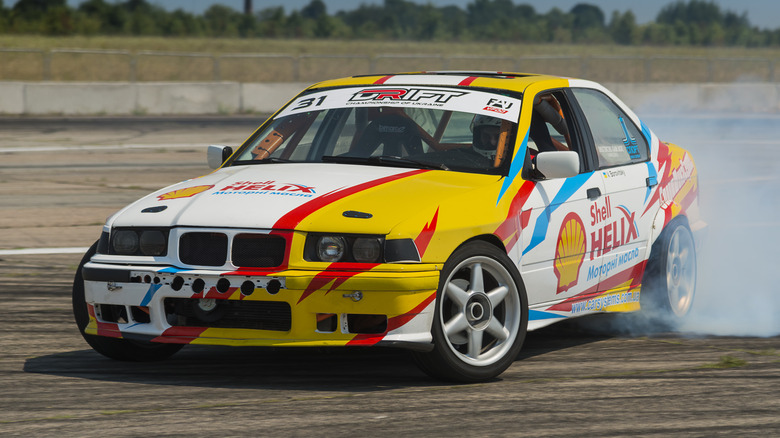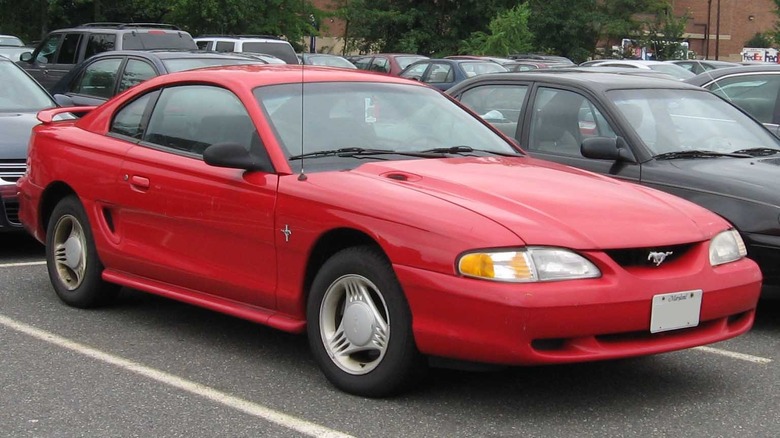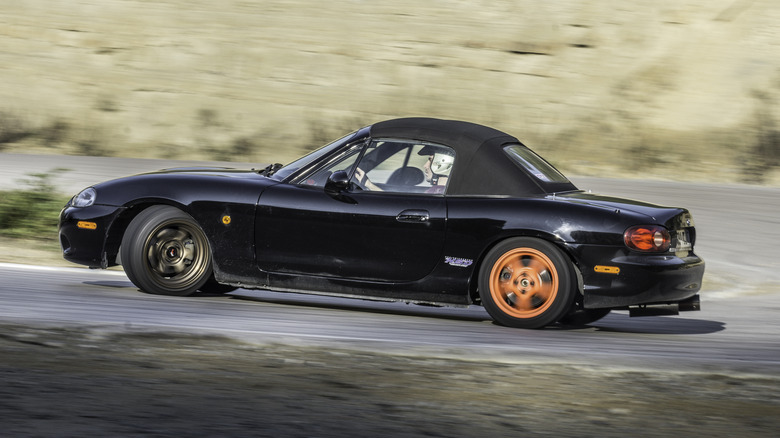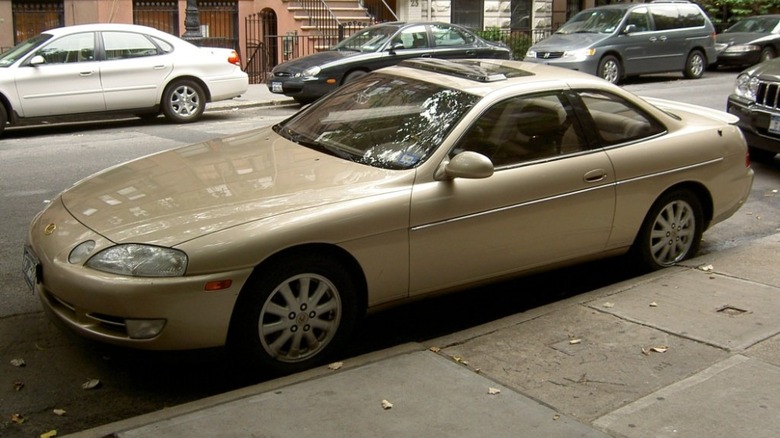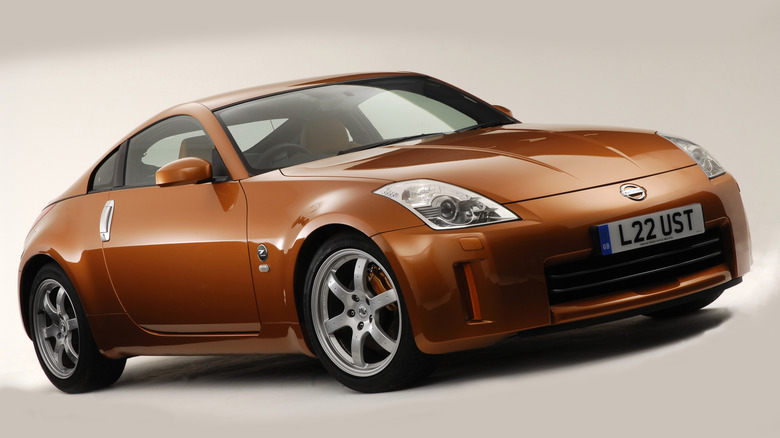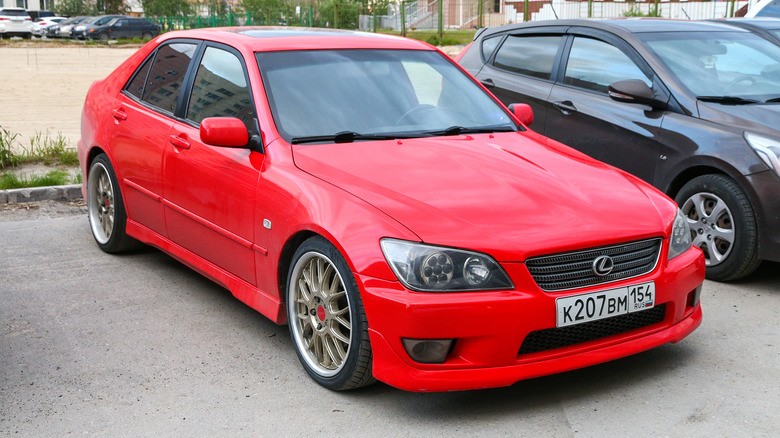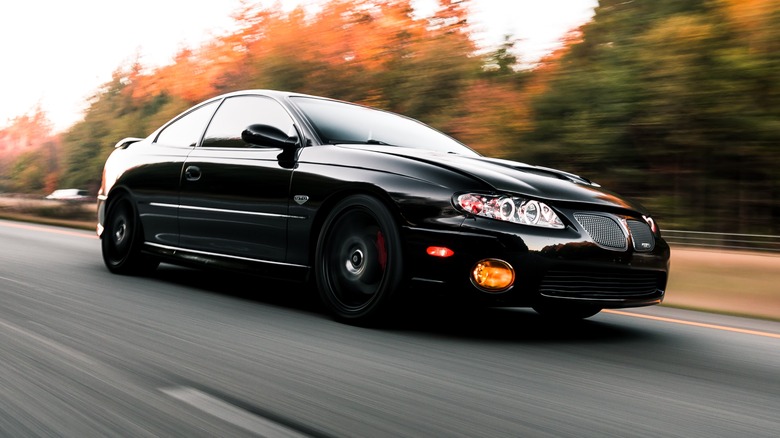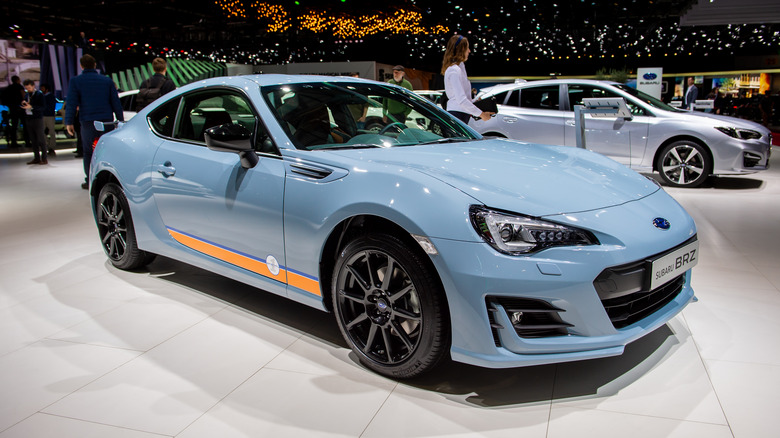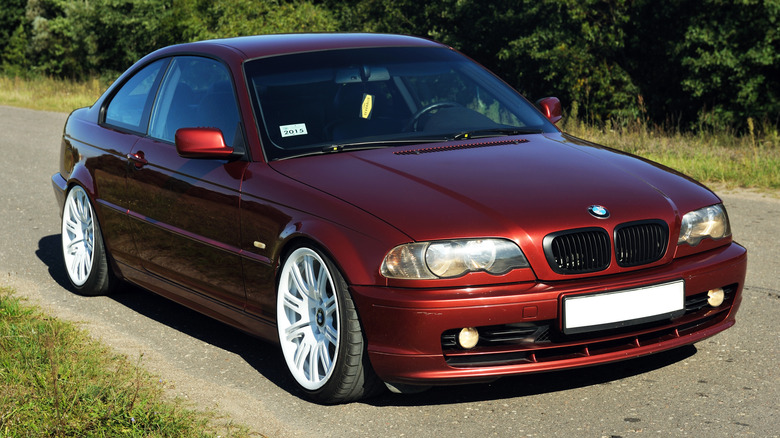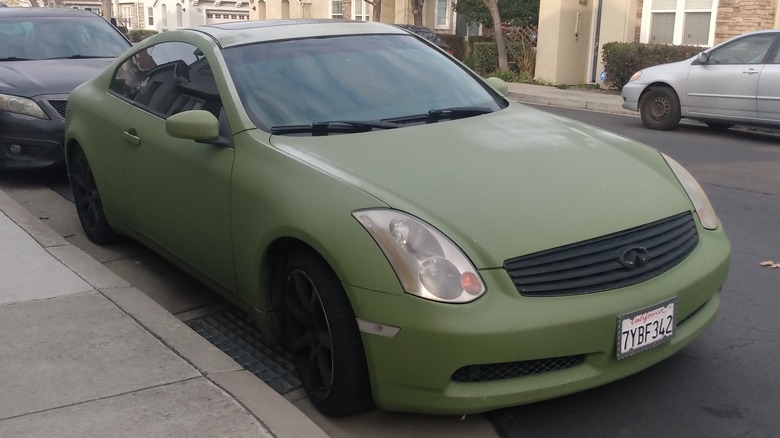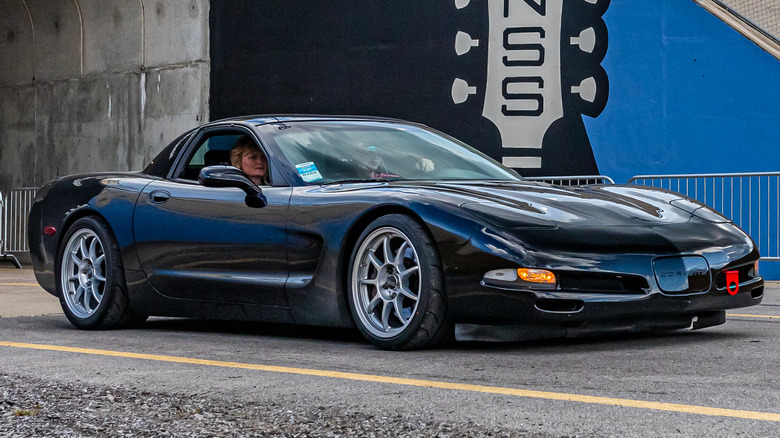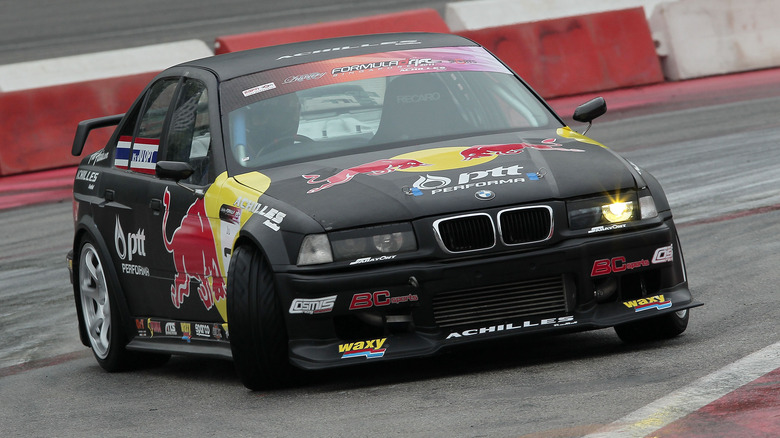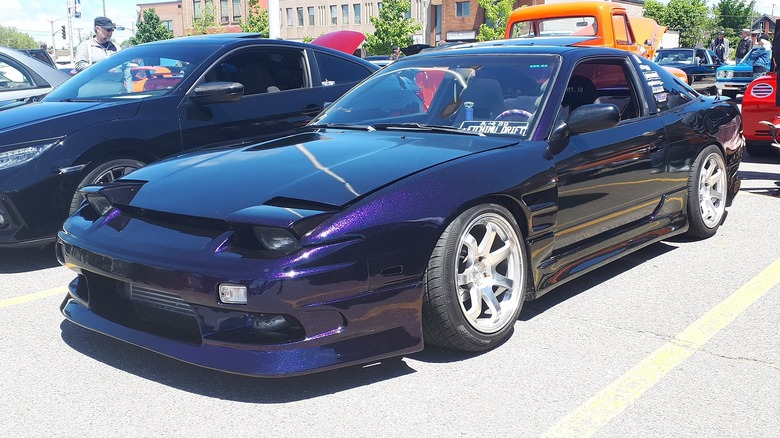12 Of The Best Drift Cars For Beginners
Drifting is one of the world's fastest-growing motorsports, evolving from its 1970s roots in Japan into a discipline with pro-level competitions all over the globe. Part of its popularity can be put down to its accessibility, as almost anyone with access to a rear-wheel drive (RWD) project car can learn to drift. After carrying out a few key modifications — such as welding the differential and fitting coilovers — you're ready to hit the track.
Well, sort of. Some cars are more naturally suited to drifting than others, and while technically any rear-drive car with enough power can be turned into a drift car, some will require a lot of extra time, effort, and technical know-how. However, these 12 cars are all great for beginners who just want to get out there without breaking the bank. Every car here is affordable, although some are easier to find used than others.
Our top picks are designed to give beginners a wide range of choices, so whether you're looking for a common drift car or something slightly more unusual, there should be something here for everyone. It's worth remembering that — like any motorsport — drifting can be dangerous, requires protective equipment and training/experience, and should only be undertaken in safe environments.
This article has been reviewed by our Executive Editor to ensure all purchasing recommendations contained within meet the highest editorial standards.
Ford Mustang SN95
The Ford Mustang ticks all the right boxes for a great starter drift car. It's affordable to buy, spare parts are readily available, and there's a large aftermarket for anyone who wants to upgrade their vehicle later down the line.
However, most importantly, the RWD, V8-powered coupe is naturally inclined to slide with only minimal modifications. That's made it a common sight at grassroots events for years now, with the fourth generation SN95 Mustang being particularly popular. Really, any recent Mustang makes a good candidate for drift conversion, but the low prices of the SN95 make it particularly attractive at the moment.
The other advantage of a Mustang is that because they're already common drift cars, it'll be easier to find others in the community with knowledge to share, either online or in person at meets. Especially when you're starting out, being able to seek advice on things like setup can be invaluable, making the Mustang a top pick for all beginners — unless, of course, you have to have something Japanese.
[Featured image by IFCAR via Wikimedia Commons | Cropped and scaled | Public Domain]
Mazda MX-5 Miata
If your starter drift car has to hail from the spiritual home of drifting, then the obvious choice is a Miata. No, it won't win any points for originality, but there's a reason why they're so popular across both drifting and so many other grassroots motorsport disciplines. Much like the Mustang, they're affordable to buy, easy to upgrade, and require only minimal modifications to get ready to go drifting. They're also cheap to find replacement parts for — which will be particularly important when you inevitably clip a wall, barrier, or anything else when first starting out.
Both the NA and NB generations make for great candidates, and which one to pick should largely be down to personal preference and whatever's available in your local area. Miatas sport modest power figures compared to some of the other cars here, but their lighter weight and responsive chassis means they're still capable of keeping up with cars with significantly more power on track.
Lexus SC 300
As much as it might be an icon for many drifters, buying a Toyota MkIV Supra is out of the question for most. Clean examples are simply too expensive, and the most beaten-up examples aren't worth the extra time and money needed to fix them up. However, the Lexus SC 300 is a more affordable alternative, sharing many of the oily bits including the Supra's famed 2JZ engine. Granted, it doesn't have the turbo 2JZ-GTE that's become so legendary among tuners, but the naturally aspirated 2JZ-GE will still provide more than enough power for anyone learning to drift.
As the luxury counterpart to the Supra, the SC 300 does come with some compromises. Perhaps the biggest one is the difficulty of finding a manual transmission example, as they're considerably rarer than the automatic. Once you've found one, the next issue is that, in stock form, the SC 300 is too heavy to be an ideal drift car. Prepping it for the track will involve stripping out as much as possible, including most of the luxurious features that made the SC 300 an appealing choice for luxury car buyers when it was new. However, a good example that you can remove some weight from will give you a starter drift car that's similar to the Supra for a fraction of the price.
[Featured image by Kentaro Matsui via Wikimedia Commons | Cropped and scaled | CC BY-SA 3.0]
Nissan 350Z
The Nissan 350Z is a common sight across grassroots events, and there's a good reason it's so popular. It's among the best affordable stock drift cars and can be readily converted to track day duties on a tight budget. The 350Z is also one of the cheapest Z cars on the used market, and — for now at least — it's not too difficult to find an example in good condition. That's partly because of its popularity when new. After several years of not having a Z car in its lineup, Nissan launched the 350Z in 2002 to both critical and commercial success.
It took the Z car formula back to basics, with a 3.5L V6, an affordable starting price, and none of the cutting-edge tech that had made its predecessor, the Z32 300ZX, balloon in price out of reach of most enthusiasts. That more basic setup is also what makes it such a great drift car, as it's both easy to modify and benefits from a large aftermarket, so off-the-shelf parts are in plentiful supply.
We've even previously argued that the 350Z is one of the best drift cars ever made, but even those who don't agree will find it hard to argue with its value and how easy it is to work on.
Lexus IS 300
Another common option for grassroots drifters is the Lexus IS 300, with plenty of builds out there ranging from budget to pro-level. While many of the priciest builds swap out the car's stock engine for something with a little more power, the standard 2JZ-GE packs more than enough grunt for learners. Like many of the other cars here, one of the key reasons the IS 300 is so appealing for first-time drifters is the availability of both affordable stock parts and plenty of aftermarket parts.
This means that when the car inevitably picks up some bumps and scrapes at the track it's easy enough to find replacements. It also means that buyers are free to upgrade the car at their own pace, rather than needing to put thousands of dollars into the car just to get it track-ready. On the flip side, the engine bay is roomy enough to accommodate all sorts of engine swaps for those who want a bigger project, from the LS 400's 1UZ-FE to a 6.0L LS2.
Pontiac GTO
The most recent generation of the iconic Pontiac GTO line was a little different from its predecessors. It was the first GTO to be built outside North America, and it wasn't actually based on an original Pontiac design at all. Rather, it was a product of GM's Australian Holden division that was called the Monaro in its home country and was lightly modified to suit American tastes before being shipped over. All the core elements of the Aussie muscle car stayed the same, including its front-engine, rear-drive layout, attainable (although not segment-beating) asking price, and — most importantly — its LS V8 engine.
It's the LS under the hood that's the key here, as it gives owners access to a huge wealth of off-the-shelf aftermarket parts, meaning significant horsepower boosts are easy to achieve. Pontiac insisted early in the car's life that it made a good drift car and even enlisted Rhys Millen to compete in one in the early days of Formula Drift. Today, it's relatively affordable to buy used, and its tried-and-tested internals should remain reliable at the track with minimal modifications.
Subaru BRZ
A perennially popular option at all levels of the sport, the Subaru BRZ — alongside its Toyota GT86 and Scion FR-S counterparts, which are both built on the same platform — makes for a great starter drift car. While they're not exactly drift missiles in bone stock form, it won't take much to get them ready for the track. In fact, their approachable handling and modest power output make them the car of choice for drift schools around the world. A comparative lack of power does mean that most owners will eventually be considering some performance upgrades, but the large aftermarket means there are plenty of off-the-shelf parts to put extra horses under the hood.
For several years, a GT86 also held the record for the world's longest drift, clocking in at 89.55 miles. That feat was achieved with a stock 200 horsepower engine too, although with the bonus of a wet track. While racking up nearly 100 mile drifts is a pastime best left to the pros, the BRZ/GT86/FR-S is a top pick for drivers of any experience level, and since the launch of the second generation car, prices for first-gen models have become temptingly affordable for those on stricter budgets.
BMW 3 Series E46
One of the most common non-Japanese brands to see at drift events is BMW, with the 3 Series in particular being a top choice. The E46 is a great place to start for beginners, as it's easy to find cheap examples, and it's not as tricky to work on as some later cars can be. A 325i or 330i will put out more than enough power for beginners, and converting the car for drift use requires only basic modifications, like welding the differential and fitting suitable coilovers.
Plenty of replacement parts are available for cheap on the used market when things break, and BMW's consistent popularity among the grassroots motorsports crowd means that a decent variety of aftermarket parts are also readily available. The chassis has proved to be capable at the top end of the sport too, with current pro drivers like Dylan Hughes using an E46 in Formula Drift.
Infiniti G35
Although it's closely related to the Nissan 350Z, the Infiniti G35 is a lot less common to see at grassroots drift events. However, all the key ingredients for a solid starter drift car are still present and correct. The 3.5L V6 engine provides plenty of power while the front engine rear-wheel drive layout is well suited to going sideways. Even better, it's affordable to buy used. There are some key differences between a 350Z and a G35, with one of the biggest being the latter car's longer wheelbase. That makes the Infiniti a little less agile on tighter tracks but also means that drifts are easier to control.
Like most of the best beginner drift cars, only minimal modifications are required to convert the G35 for grassroots track use, and since it shares many of its underpinnings with the 350Z, there are plenty of aftermarket parts available for reasonable prices if you decide to upgrade the car down the line. It might not be quite as popular as its Z-car sibling, but the G35 still makes a solid choice for sliding duties.
[Featured image by DestinationFearFan via Wikimedia Commons | Cropped and scaled | CC BY-SA 4.0]
Chevrolet Corvette C5
Another more from left-field option is the Chevy Corvette, which has become a more common sight across drift events in recent years as prices have become more attainable. It's still not the cheapest car on this list, but considering how much JDM favorites like the S-chassis cars now sell for, it's becoming an ever more attractive option. The LS V8 engine under the hood is ripe for upgrading, although even stock it should be more than powerful enough for novices.
The C5 benefits from a few of the same basic drift modifications that most road cars will require to get them consistently sideways, although this can still be done on the cheap. The popularity of the Corvette also means that finding replacement body panels and trim shouldn't be an issue and should be less hassle than many of the '90s JDM cars that have now become drift icons. While a C5 is still going to be out of reach for those on a stricter budget, if you've got some cash to splash, it's a great alternative to the typical Japanese drifters.
BMW 3 Series E36
Alongside the E46, the older E36 also makes a great starter drift car, and it's dirt cheap too. The chassis has already proven to be able to compete in the top tiers of the sport, but turning a used example into a grassroots drift car will take only minimal time and resources.
As one of the oldest cars here, it's always a good idea to be doubly sure of the condition of any E36 before buying it. While the cheapest examples might seem like a good deal at first, buying an example in need of too much remedial work will invariably end up costing more in the long run than simply buying a cleaner example.
The good news is that if an E36 does need some attention, it's generally straightforward to work on. It shouldn't require a big budget even if more major repairs do crop up, either — as long as you're willing to do all the labor yourself.
Nissan 240SX
While many examples have now appreciated in value beyond the reach of entry-level drifters, it would be impossible to write an article about great grassroots drifters without including an S-chassis Nissan. The 240SX, sold as the Silvia in Japan, is one of the most iconic drift cars ever and remains the ride of choice for countless professionals and amateurs alike. While they used to be favored for their affordability, the enduring popularity of the 240SX combined with the fact that the supply of examples in good condition is rapidly drying up has sent prices soaring.
Preparing a 240SX for the track is also easy, and even stock, it'll still slide. The range of aftermarket performance parts and upgrades for the car is one of the most comprehensive out there, and so the limit for what a build can become is primarily determined by the ambitions (and bank account) of its builder. Finding a used example for a reasonable price is not easy, much less one that's in reasonable condition, too. Still, for those willing to put the time and money into sourcing a solid S-chassis, it's hard to beat.
[Featured image by SsmIntrigue via Wikimedia Commons | Cropped and scaled | CC BY-SA 4.0]
